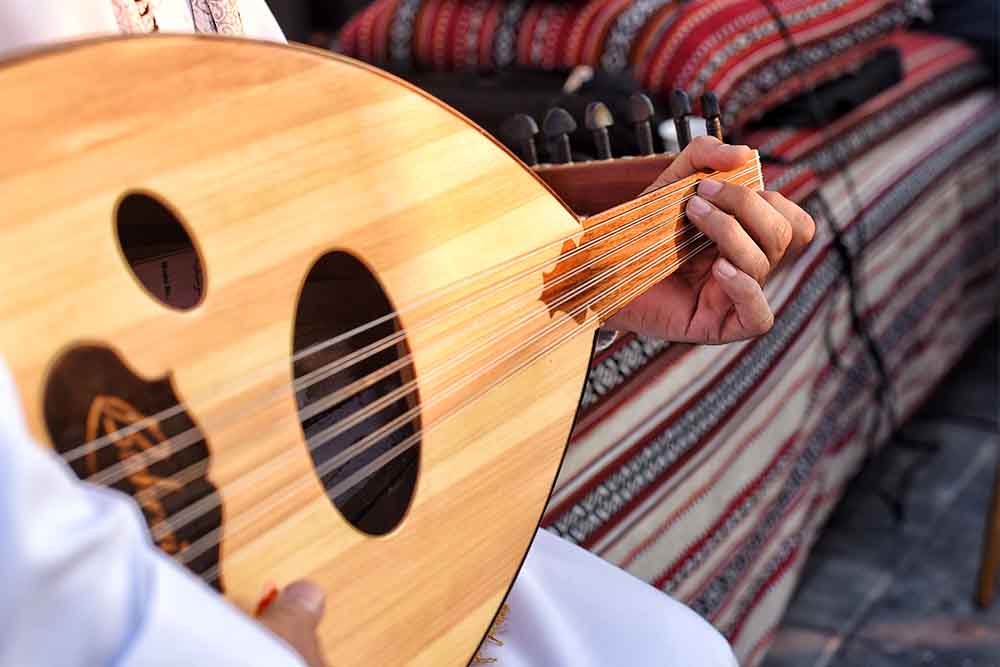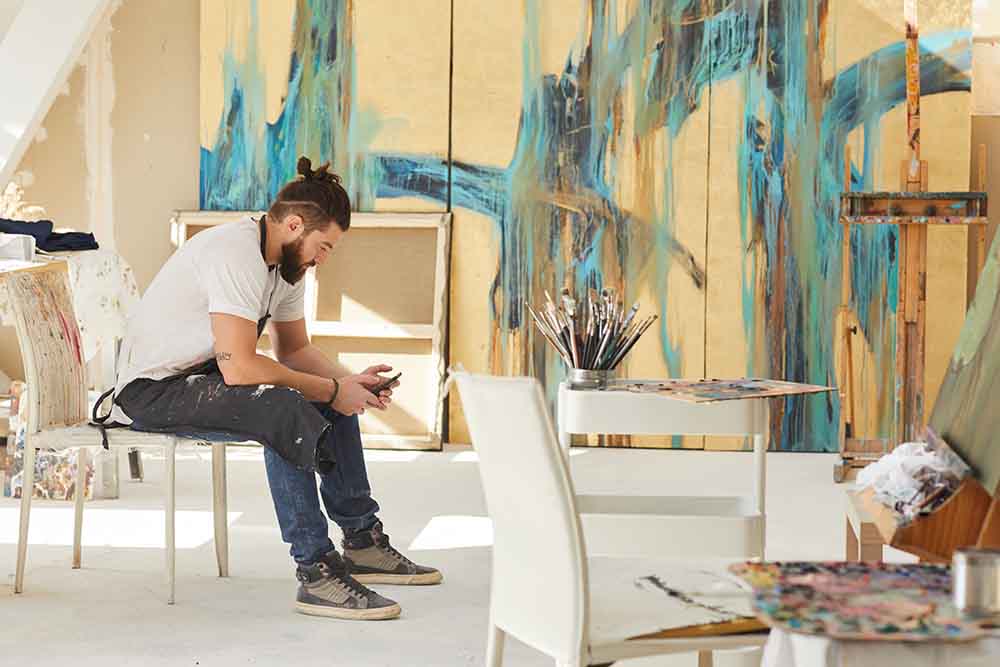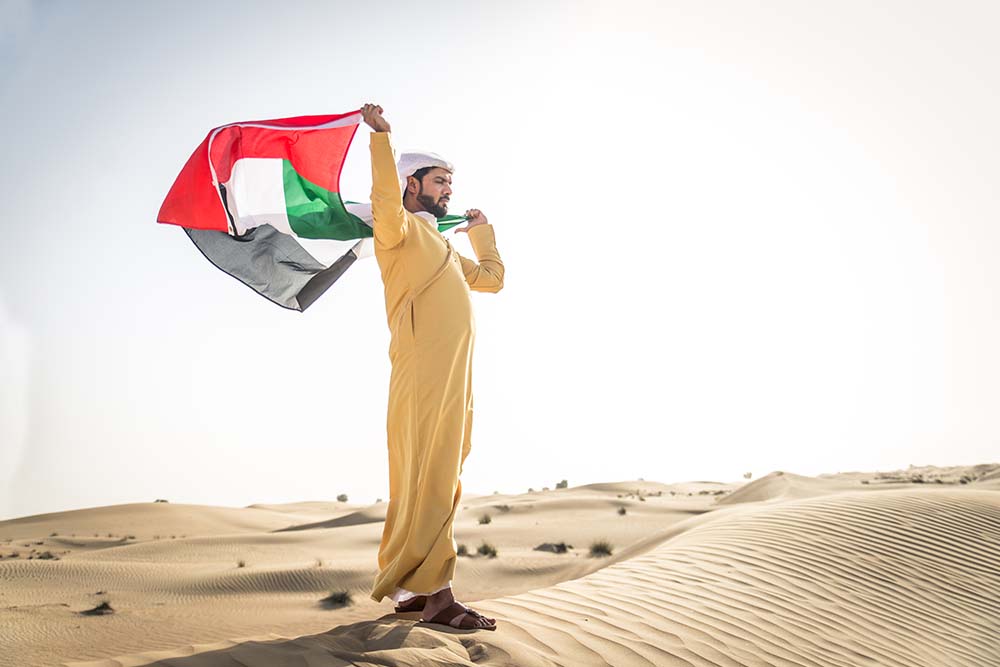The UAE has undergone a remarkable transformation in a shockingly short period. In 1971, it was a collection of desert sheikhdoms. Today, the nation has world-class infrastructure, a diversified economy and futuristic cities like Dubai. Let’s explore the rich UAE culture and heritage.

Brief History of UAE
Abu Dhabi
The modern kingdom of Abu Dhabi began in 1761. The Bani Yas tribe discovered drinking water at Qasr Al Hosn and established a settlement. After the unification of tribes, by 1975, Sheikh Shakhbut bin Dhiyab Al Nahyan was appointed ruler of Abu Dhabi.
Sheikh Zayed bin Sultan Al Nahyan, regarded as the UAE’s Founding Father, spearheaded the struggle to unite the kingdoms. He found success in 1971 by creating a union and becoming its first president.
Dubai
The earliest description of Dubai can be found in 1095 by Abū’ Ubayd’ Abd Allāh al-Bakrī. Later, in 1590, a renowned pearl merchant, Venetian Gasparo Balbi, mentioned the place as Dibei. He mentioned the phenomenal quality of pearls found there.
Until 1958, successive leadership continued to build infrastructure using only revenues generated by trading. Next year, a master plan was devised for the city, beginning its journey to modernisation with airports, telephone lines, electricity and water supply.
Sharjah
In the 16th century, the Al Qasimi tribe established a stronghold in Sharjah. Later on, the city flourished as a major trading port on the Arabian Gulf.
Sharjah’s strategic location made it suitable for the pearl trade, which was quite vital to the area’s economy at the time. In 1971, Sharjah became a founding member of the United Arab Emirates and has further developed a unique identity.
Ras Al Khaimah
Throughout history, Ras Al Khaimah served as a strategic trading hub due to its proximity to the Strait of Hormuz. The 18th century saw the rise of the Al Qasimi tribe, which established Ras Al Khaimah as a powerful maritime emirate.
Following the decline of piracy in the mid-19th century, Ras Al Khaimah entered a period of cooperation with the British, culminating in its inclusion within the Trucial States..
Umm Al Quwain
Like other emirates, Umm Al Quwain also depended on fishing and maritime activities. This economy developed naturally due to its location on the Arabian Gulf coast.
Umm Al Quwain also became a founding member of the UAE in 1971 and a free trade zone in 1987.
Fujairah
Unlike other emirates directly bordering the Arabian Gulf, Fujairah is located along the eastern coast of the UAE. While other emirates focused on the pearl trade, Fujairah developed agriculture due to the fertile wadis running through the emirate.
In 1971, Fujairah became a founding member of the United Arab Emirates.
Ajman
This emirate played a significant role in the regional pearling industry, with its divers known for their skill and deep-sea diving techniques. A lesser-known aspect of Ajman’s history is its production of Dhukhun, a traditional incense made from fragrant resins and woods.
Following the formation of the UAE, Ajman has carved a niche for itself by establishing free zones that cater to specific industries like media and technology.

Languages
Trade routes connecting the region to neighbouring areas influenced languages spoken in settlements in the UAE. Aramaic and other dialects of Arabic were prevalent before the 7th century CE.
Following the spread of Islam, Arabic became the region’s dominant language, replacing Aramaic and local dialects.
Culture
The UAE culture and heritage is unlike any other, shaped by its desert environment, rich history and diverse expat population. Islam serves as the foundation of Emirati culture, reflected in everything from architecture and attire to social customs and daily life.
Hence, when visiting the UAE, it’s important to be mindful of local customs and dress modestly, particularly in religious sites.
Arts
Paintings
Early works by Emirati artists often depicted the stark beauty of the desert, with vast dunes rendered in warm ochres and burnt siennas. Artists like Hussain bin Thalal explored geometric patterns and calligraphy, drawing inspiration from Islamic art and architecture.
In contrast, artists like Saif Al-Dhaheri focused on capturing the bustling energy of the growing cities, with crowded marketplaces and towering skyscrapers. Reflecting UAE’s diversity of the population, the native art scene also embraced the talents of people hailing from different cultures.
Literature
Literature in the UAE culture and heritage is deeply rooted in a rich oral tradition.
Taghrouda, a poetry duel used to locate lost animals, was performed on horseback in rural areas. This equestrian poetry often celebrated courage and bravery.
Whereas, Nabati poetry has been popular since the 16th century. The Hirah group, a trio of Sharjah poets active in the 20th century, drew inspiration from European Romanticism in their works.
Music and Dance
Al Ayala, a powerful dance symbolising a triumphant battle, features rhythmic drumming and male performers wielding swords and rifles. Liwa, a dance with African influences, is performed at a fast tempo and with a stirring drumbeat, boosting morale and celebrating community.
Moreover, Haban, known for its swaying movements and melodic tunes, is often performed at weddings and social gatherings.
Social Customs
UAE’s social customs are mostly defined by its conservative Islamic heritage. Greetings are friendly, with men often shaking hands or embracing. Women typically greet each other with a smile or handshake.
Modesty in dress is important. Both men and women should wear clothing that covers shoulders and knees, opting for loose-fitting and breathable fabrics in the warm climate. If invited to a local’s home, a small gift of sweets or flowers is a thoughtful gesture.

Cuisine
The UAE’s cuisine blends Bedouin traditions (meat and camel milk), fishing (Persian Gulf varieties) and farming (dates) for a unique flavour profile. Traditional dishes include Machbous (spiced rice with meat), Harees (porridge) and Maq’louba (upside-down rice dish).
Breakfasts showcase breads like Raqaq and Chebab with cheese, date syrup or eggs. Traditional sweets include Luqeymat (sesame-seed dusted dumplings), Khabeesa (sweetened bread crumbs) and Batheeth (semolina with dates).
Traditional Attire
Men
Men’s clothing centres around the Kandura, which is a loose-fitting, ankle-length white robe made for comfort in the heat. Worn with a head covering called a Ghutra, typically white or red and white and secured with an Agal to protect from the sun.
For formal occasions, a luxurious black cloak, Bisht, might be worn.
Women
Women traditionally wear an Abaya, a long black robe that covers the entire body. A Shayla, a long rectangular head covering, completes the outfit. Some women may wear a Hijab underneath the Shayla for religious reasons.
Women also wear Kaftan, a loose-fitting dress perfect for the hot climate. Traditional gold or silver jewellery with intricate designs adds a touch of elegance.
Sports
Camel racing is perhaps the most iconic sport in the UAE. It has its roots in the Bedouin culture, with specially trained camels (once ridden by jockeys, now guided robotically) thundering across desert tracks in winter.
Moreover, another UNESCO-recognized traditional sport is falconry which symbolises the Emirati’s connection to their desert past. Before the invention of the car, horses accompanied people on every journey and participated in warfare and hunting.
Architecture
The architecture of UAE’s historic buildings features the desert landscape and nomadic traditions. This style prioritises functionality and readily available materials.
Local resources like palm fronds, mudbrick, coral and stone dictated construction methods, resulting in a unique and practical architectural style.
The world’s tallest building, Burj Khalifa, became a symbol of the nation’s newfound prosperity.
Experience UAE’s Rich Heritage Today
The best way to experience it would be to actually meet the locals. The Emirati people are known for their hospitality, and they are highly accommodating to their guests.
Additionally, the best times to mingle are during festivals and events when the whole nation comes together to celebrate.
Festivals and Events
Eid Al Fitr and Eid Ul Adha
Eid Al Fitr marks the end of Ramadan, the Islamic holy month of fasting. It’s a joyous occasion which people celebrate with prayer, feasting, gift-giving and family gatherings.
Eid Ul Adha coincides with the Hajj pilgrimage to Mecca. Muslims commemorate Prophet Abraham’s willingness to sacrifice his son by offering an animal sacrifice and sharing the meat with the less fortunate.
Sheikh Zayed Heritage Festival
The Sheikh Zayed Heritage Festival, held in Abu Dhabi, pays homage to the legacy of the UAE’s founding father, Sheikh Zayed bin Sultan Al Nahyan. Visitors can witness live falconry demonstrations and participate in exciting competitions..
UAE National Day
UAE National Day marks the unification of the seven emirates that formed the United Arab Emirates in 1971. It’s a national holiday filled with patriotic fervour. Festivities include fireworks displays, parades, cultural performances and special events.
Museums & Heritage Sites
The history of the UAE goes back to 6000 BC. By 1979, the nation was already making conservation efforts to safe its rich heritage.
Today, Al Ain is one of the UNESCO World Heritage Sites. That is due to the cultural presence covering the Neolithic through the Iron Age.
The site includes:
- Six Oases of Al Ain
- Bida bint Saud Stone Tombs
- Hili Archaeological Park
- Jebel Hafit Tombs
Here is a selection of interesting museums to visit in the UAE:
| Museum | Description |
| Al Ahmadiya School (Dubai) | Once an Islamic boys’ school, Al Ahmadiya School is the oldest surviving building in Dubai. |
| Al Mahatta Museum (Sharjah) | Explore Sharjah’s heritage through displays of traditional crafts, music and customs. |
| Al Eslah School Museum (Dubai) | Restored schoolhouse offering a glimpse into Dubai’s early 20th-century education system. |
| Camel Museum (Abu Dhabi) | Dedicated entirely to camels, it explores their history, cultural significance and various breeds. |
| Dubai Museum (Dubai) | Located in Al Fahidi Fort, it showcases Dubai’s transformation from a fishing village to a metropolis. |
| Dubai Coins Museum (Dubai) | Explore the history of currency in the UAE and beyond with a collection of coins and banknotes. |
| The Wadi Caves (Fujairah) | Journey underground to explore these fascinating natural caves formed millions of years ago. |
| Fujairah Heritage Village (Fujairah) | This heritage site is a living museum offering a step back in time to experience traditional Emirati life with craft demonstrations. |
| Sharjah Art Museum (Sharjah) | It is the largest art museum in the Emirates, housing a collection of over 7,000 works focusing on Arab and Islamic art. |
| Sharjah Archaeology Museum (Sharjah) | It preserves the archaeological heritage of the UAE and the wider region, with artefacts dating back thousands of years. |
| Sharjah Heritage Museum (Sharjah) | Traditional ways of life in Sharjah are displayed here, with exhibits on local crafts, customs and architecture. |
| Sharjah Museum of Islamic Civilization (Sharjah) | The museum explores the rich history and culture of Islamic civilisation. |
| Sheikh Zayed Palace Museum (Abu Dhabi) | The Grand Palace offers a glimpse into the life of the UAE’s founding father, Sheikh Zayed bin Sultan Al Nahyan. |
FAQs
Multiple sites at Al Ain, Abu Dhabi, were recognised by the UNESCO World Heritage Centre in 2011, including:
– Six Oases of Al Ain
– Bida bint Saud Stone Tombs
– Hili Archaeological Park
– Jebel Hafit Tombs
Khuzi is the national dish of the United Arab Emirates. It has lamb or goat, rice, spices, nuts and dried fruits.
The UAE culture and heritage is fundamentally rooted in the millennia-old history of its people. There are many museums available for those interested in the history of Emirati people.
Stay tuned to Property Finder blogs for more educational guides about the United Arab Emirates.